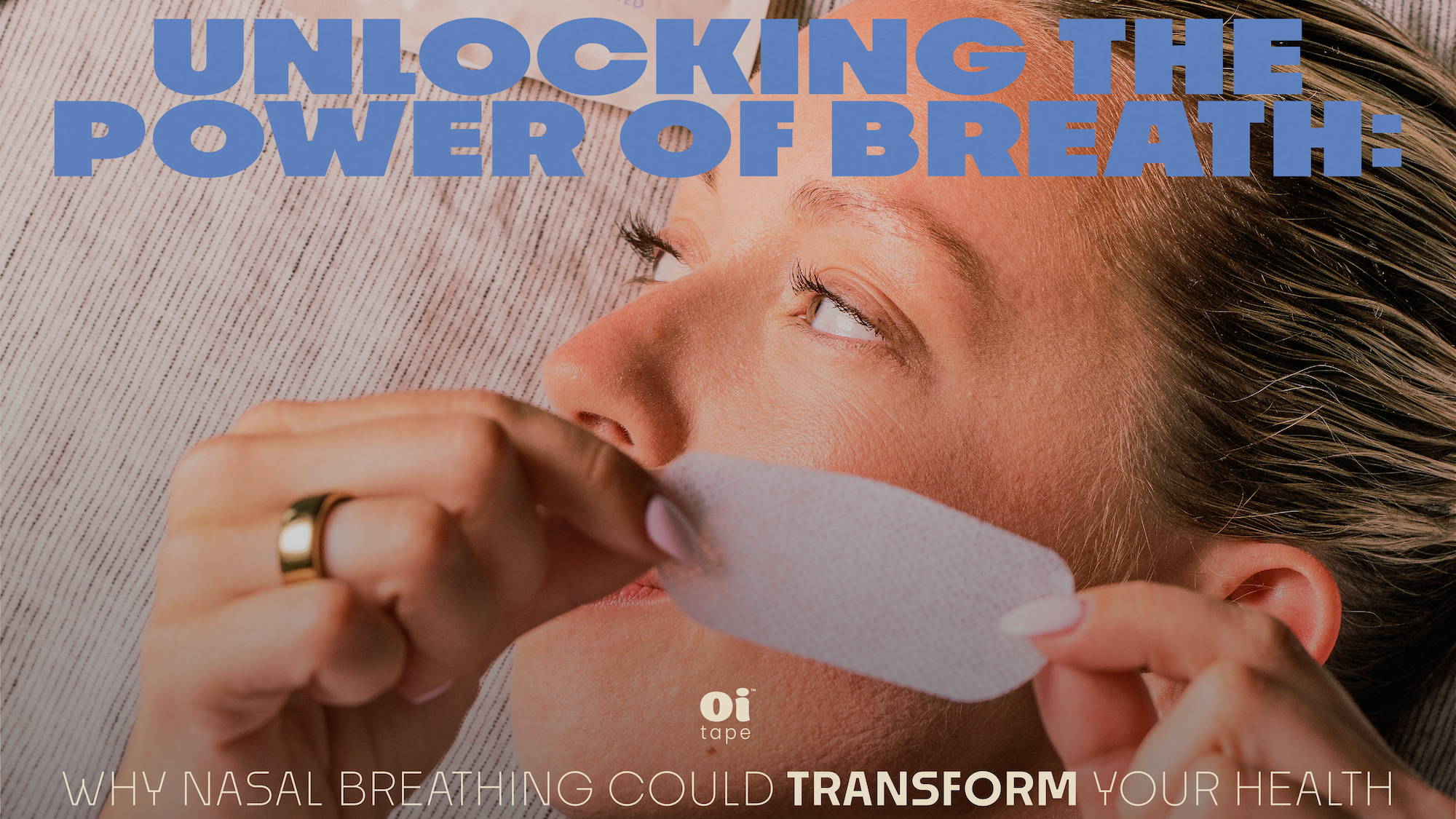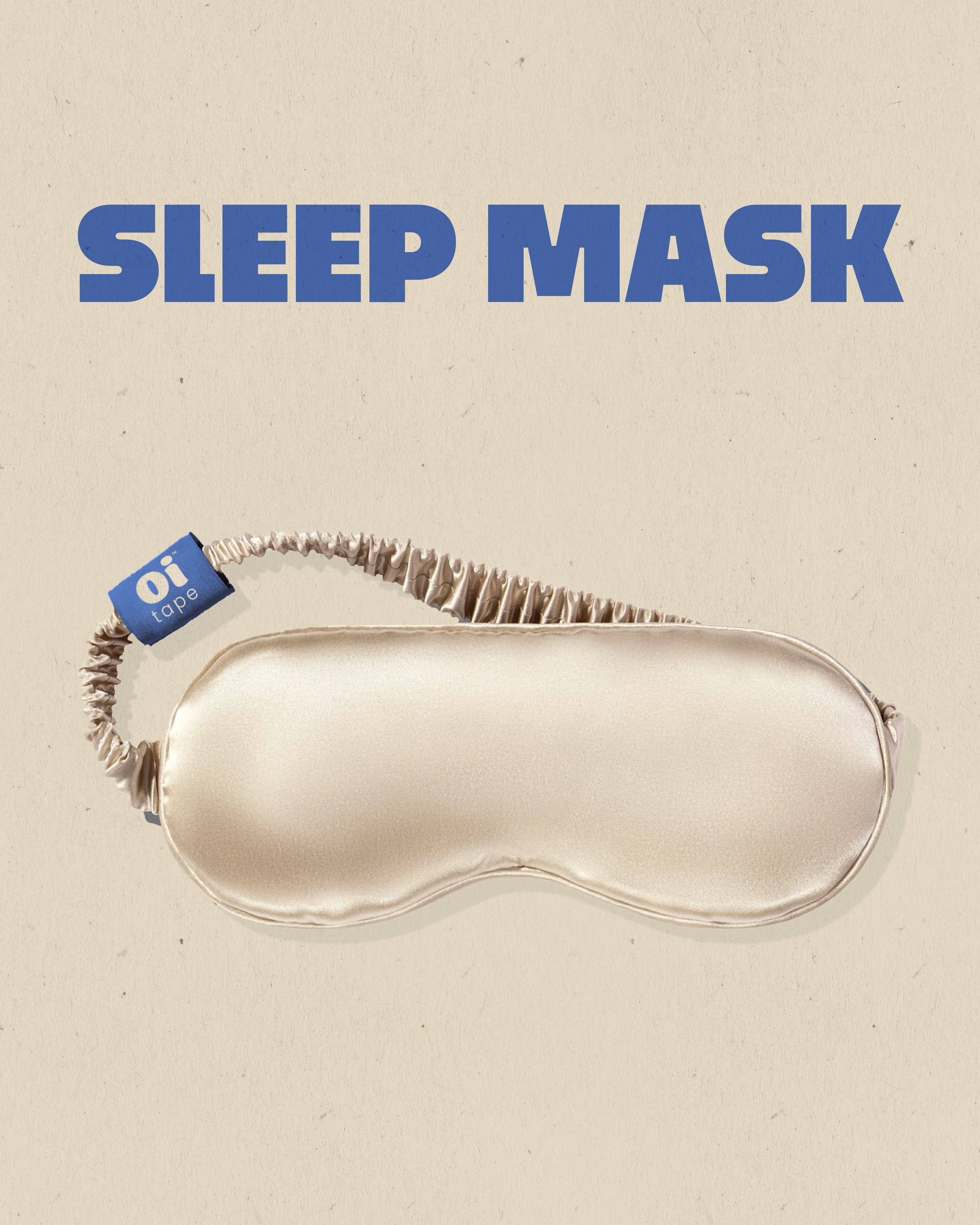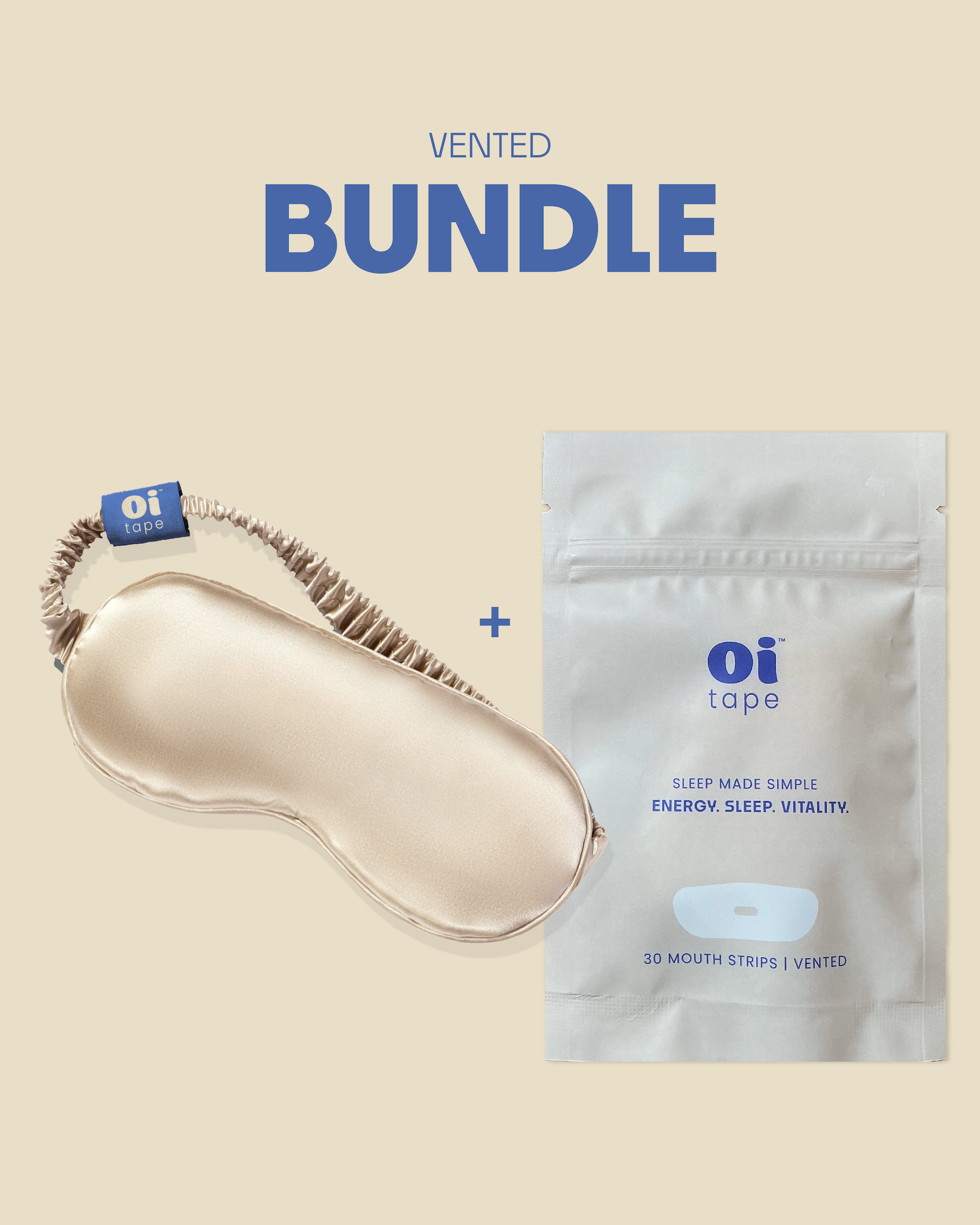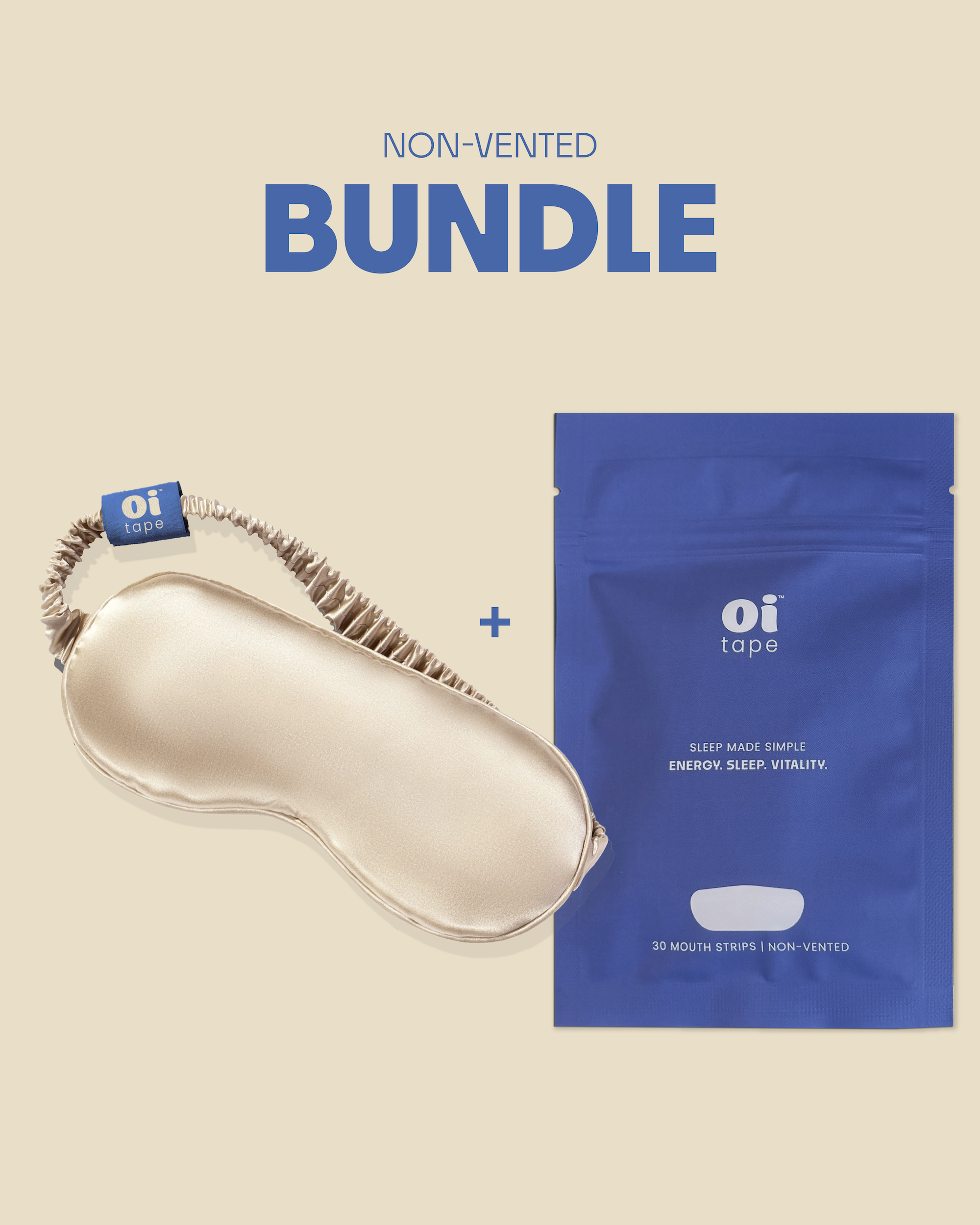

Why Nasal Breathing Could Transform Your Health
The Forgotten Superpower
We take around 20,000 breaths every day, yet most of us rarely think about how we breathe. The simple choice between breathing through the nose or the mouth has profound effects on our health, longevity, and energy. In his best-selling book Breath, James Nestor explores this forgotten science and reveals that something as simple as nasal breathing could change our lives.
At oi tape, we believe that better breathing starts with awareness—and sometimes, with something as small as a piece of tape. Before we dive into practical tools, let’s explore the science behind the breath that keeps us alive.
The Nose: Our Silent Warrior
The nose is more than just a passage for air—it’s the body’s silent warrior, as Nestor describes. Acting as a gatekeeper, pharmacist, and emotional compass, the nose filters, warms, and conditions every breath we take.
When we breathe through the nose instead of the mouth:
-
Nitric oxide increases sixfold, boosting circulation and immunity.
-
We absorb up to 18% more oxygen.
-
Our nervous system stays balanced, helping us remain calm and focused.
-
Pathogens, allergens, and dust are filtered before they reach the lungs.
Mouth breathing, in contrast, bypasses all of these benefits and can lead to poor sleep, fatigue, and even long-term health issues.
Want to go deeper? Here’s a study on nitric oxide and nasal breathing that supports these findings.
Lung Capacity: A Surprising Predictor of Longevity
In 1980, the Framingham Study shocked the medical community with a discovery: the strongest predictor of lifespan wasn’t genetics, diet, or even exercise—it was lung capacity.
-
People with larger lungs lived significantly longer.
-
Between ages 30 and 50, the average person loses 12% of lung capacity.
-
By 80, we breathe in 30% less air than in our 20s.
This decline isn’t inevitable. With breath training and nasal breathing, we can slow down lung deterioration and improve overall vitality.
Related read: American Lung Association tips for maintaining healthy lungs.
The Diaphragm: Your Second Heart
Breathing isn’t just about the lungs—it’s also about the diaphragm, the dome-shaped muscle beneath them. Most adults only use about 10% of their diaphragm during breathing, leading to shallow chest breathing.
This has consequences:
-
Overburdening the heart
-
Raising blood pressure
-
Causing circulation problems
When we expand our breath to 50–70% of diaphragm capacity, the effects are profound:
-
Less cardiovascular strain
-
Better oxygenation
-
More efficient energy use
That’s why the diaphragm is often called the “second heart”—its rhythm directly influences the heartbeat.
Carbon Dioxide: The Misunderstood Gas
Many of us think of carbon dioxide (CO₂) as a waste product, but in truth, it’s essential for health. Breathwork expert Anders Olsson, cited in Breath, explains:
-
We have 100 times more CO₂ than oxygen in our bodies.
-
Increasing tolerance to CO₂ actually helps us use oxygen more efficiently.
-
Breath-holding and slow breathing exercises can sharpen the mind, burn fat, and even aid in healing.
The takeaway? Learning to embrace—not fear—CO₂ is part of becoming a more efficient breather.
Your Body is a Collection of Tubes
Picture this: if you lined up all the tubes and airways in your lungs, they’d stretch from New York City to Key West—over 1,500 miles. These tiny passageways tirelessly exchange oxygen and carbon dioxide to keep us alive.
On average, your blood makes a full circuit through the body once every minute, moving about 2,000 gallons of blood each day. Efficient breathing keeps this process smooth, while poor breathing adds stress to the entire system.
Mouth Taping: A Small Tool, Big Results
James Nestor experimented with different tapes to stay in nasal breathing mode while sleeping. His best option? A simple gentle surgical tape. It kept his mouth closed without irritation, helping him sleep better and wake up more energized.
At oi tape, we’ve taken this idea further. Our tape is designed specifically for safe, comfortable sleep support:
-
Gentle, skin-friendly adhesive
-
Breathable design
-
No sticky residue
-
Tailored for nightly use
By keeping the mouth closed, oi tape encourages nasal breathing all night long—helping users wake up refreshed, oxygenated, and ready to take on the day.
Try it yourself: Explore oi tape’s mouth taping solutions here.
Breath and Longevity: The Bigger Picture
The science is clear: better breathing equals better living.
-
Larger lung capacity = longer life
-
Diaphragmatic breathing = healthier circulation
-
Nasal breathing = improved oxygenation
From ancient yogic practices to modern science, the message is the same: how we breathe shapes how we live. And with tools like oi tape, anyone can retrain their breath and reclaim their health.
5 Practical Ways to Start Today
-
Breathe through your nose whenever possible. Notice when you slip into mouth breathing.
-
Practice diaphragmatic breathing. Place your hand on your belly and expand it as you inhale.
-
Experiment with breath holds. Gently holding your breath after an exhale helps build CO₂ tolerance.
-
Incorporate movement. Try walking, yoga, or light exercise while nasal breathing.
-
Use oi tape at night. It’s a simple, effective way to train your body to stay in nasal breathing mode.
Breath is Life
Every breath is an opportunity. By embracing nasal breathing, strengthening lung capacity, and using simple tools like oi tape, we can improve sleep, sharpen focus, boost immunity, and even extend our lifespan.
The next time you take a breath, remember—it’s not just air. It’s life. And you have the power to make it count.
Ready to experience the benefits of nasal breathing? Shop oi tape today and start your journey toward healthier, more restorative breathing.





